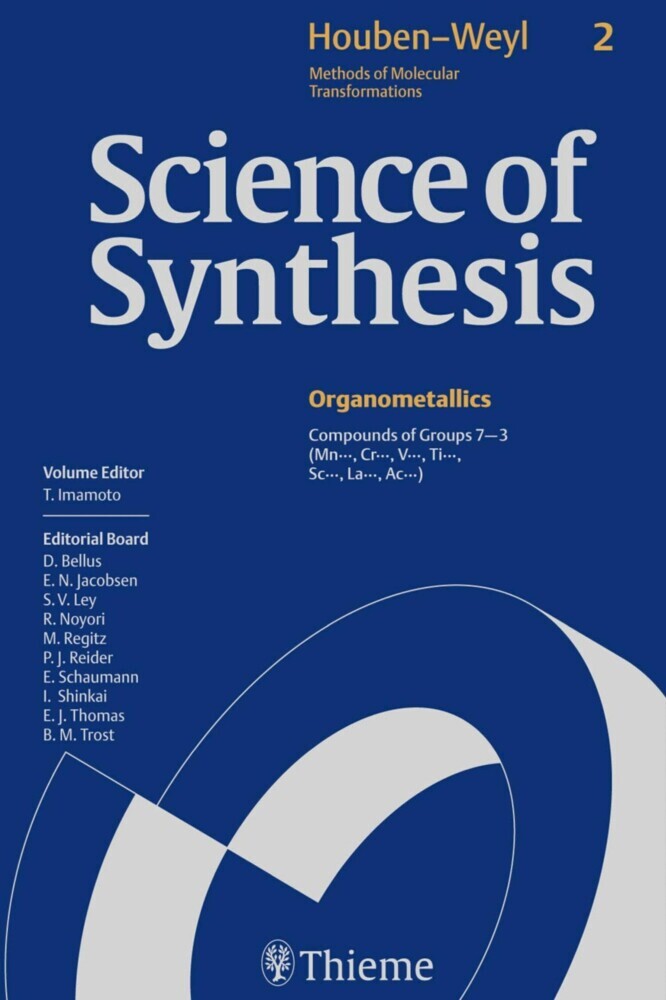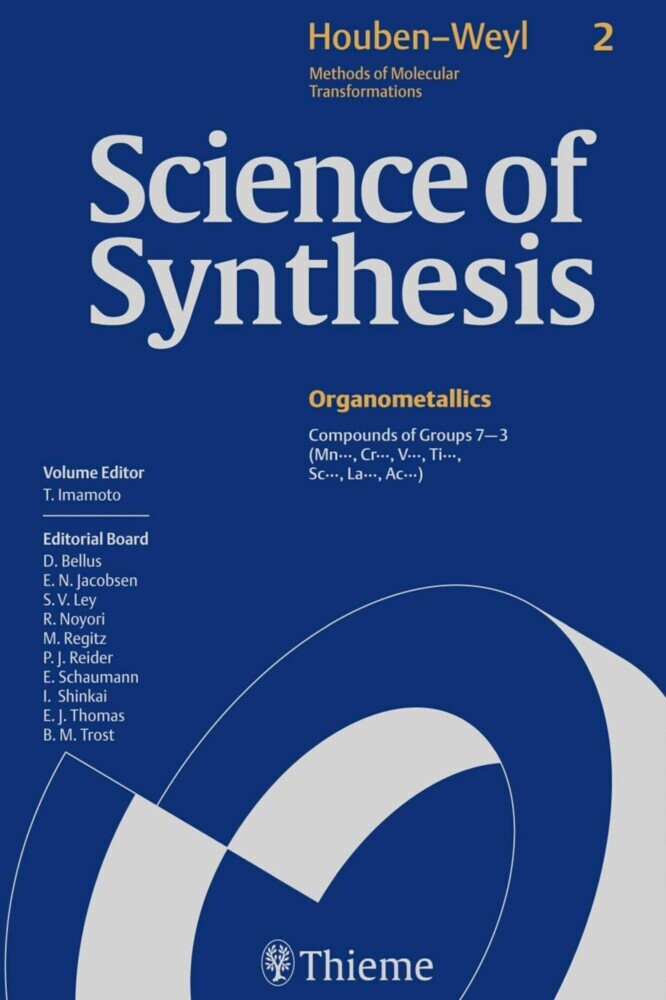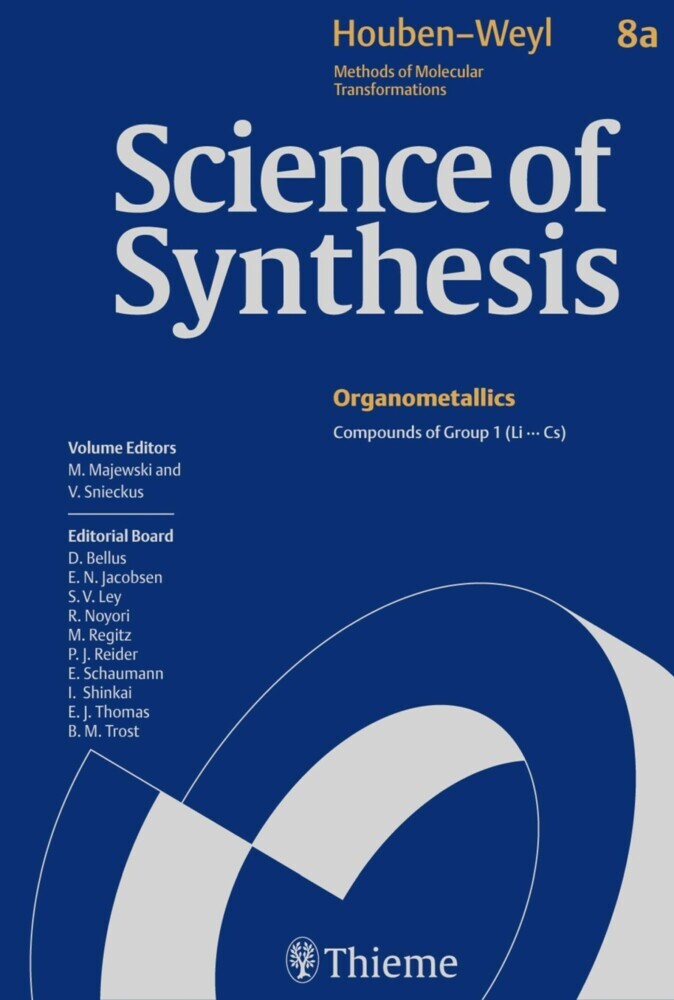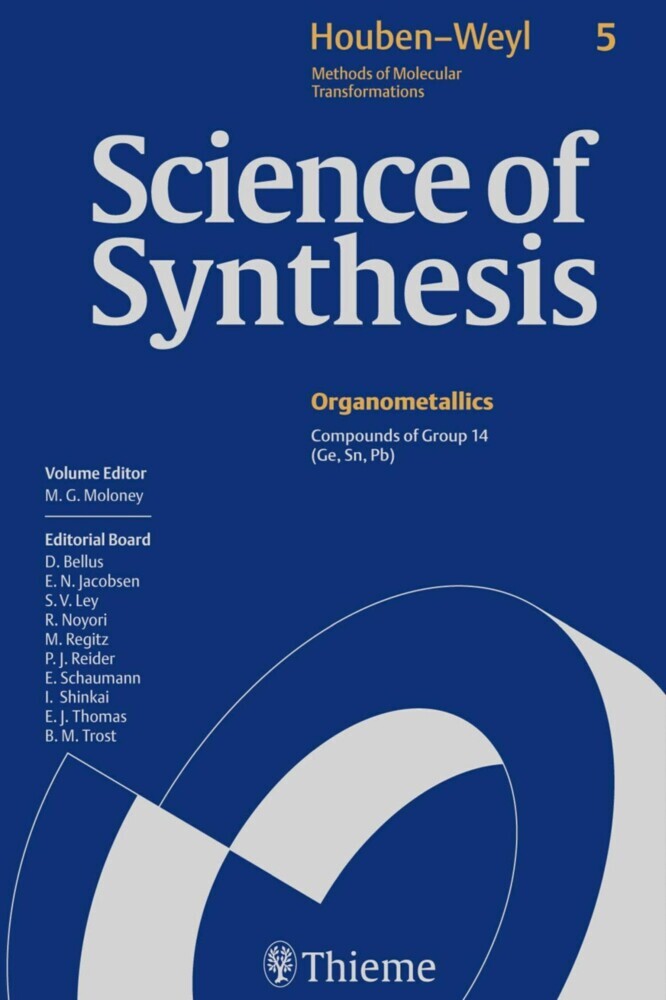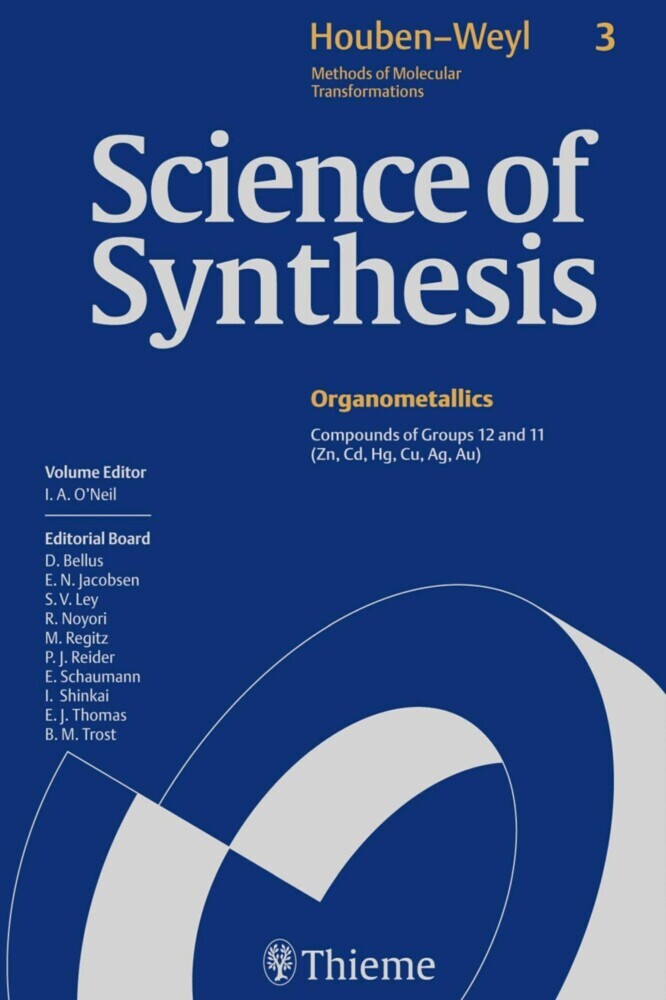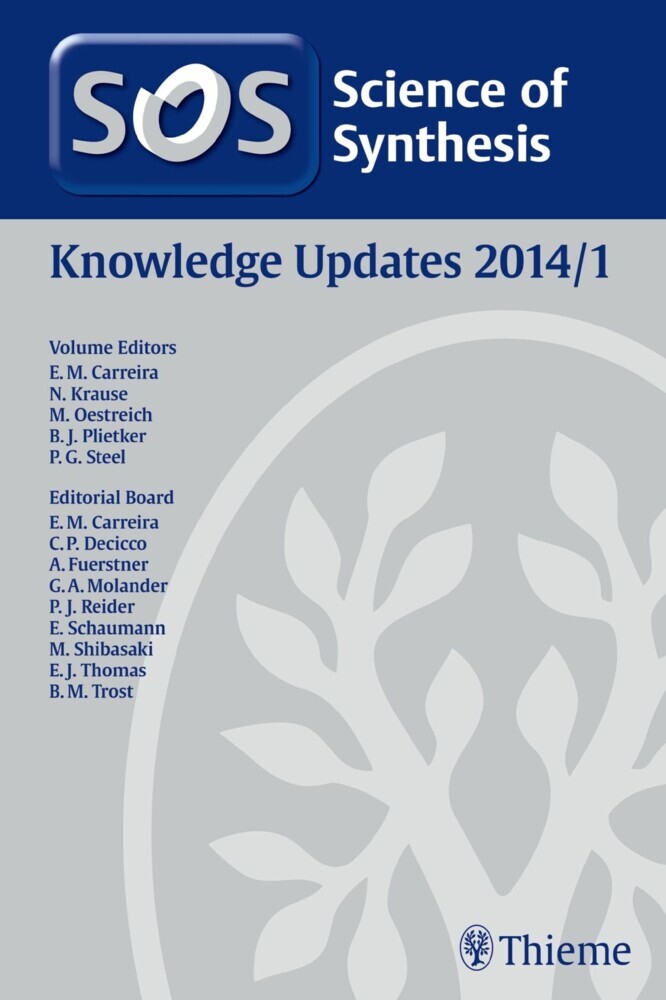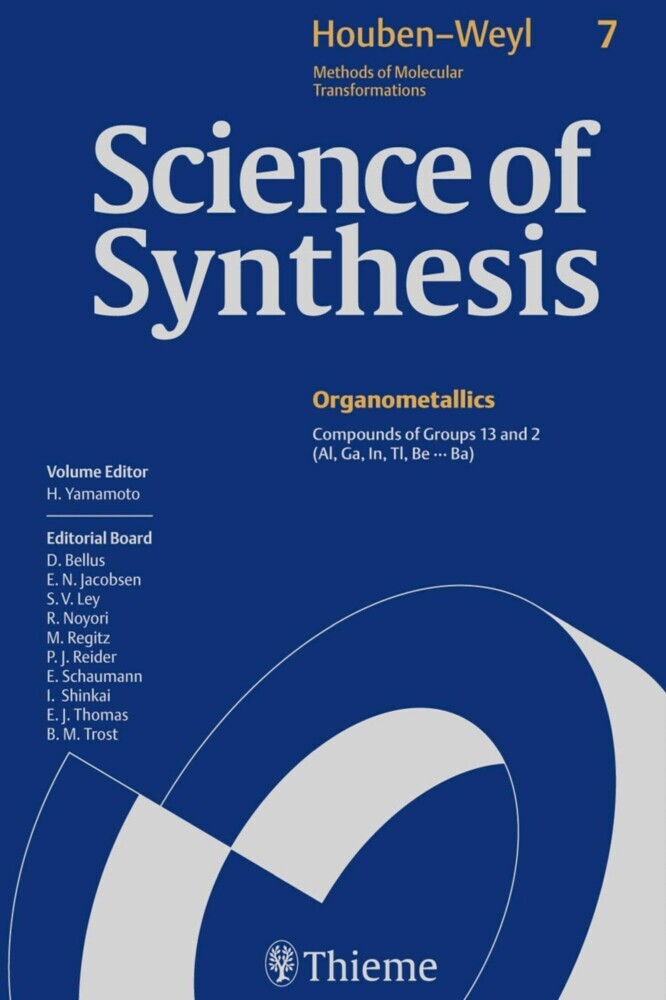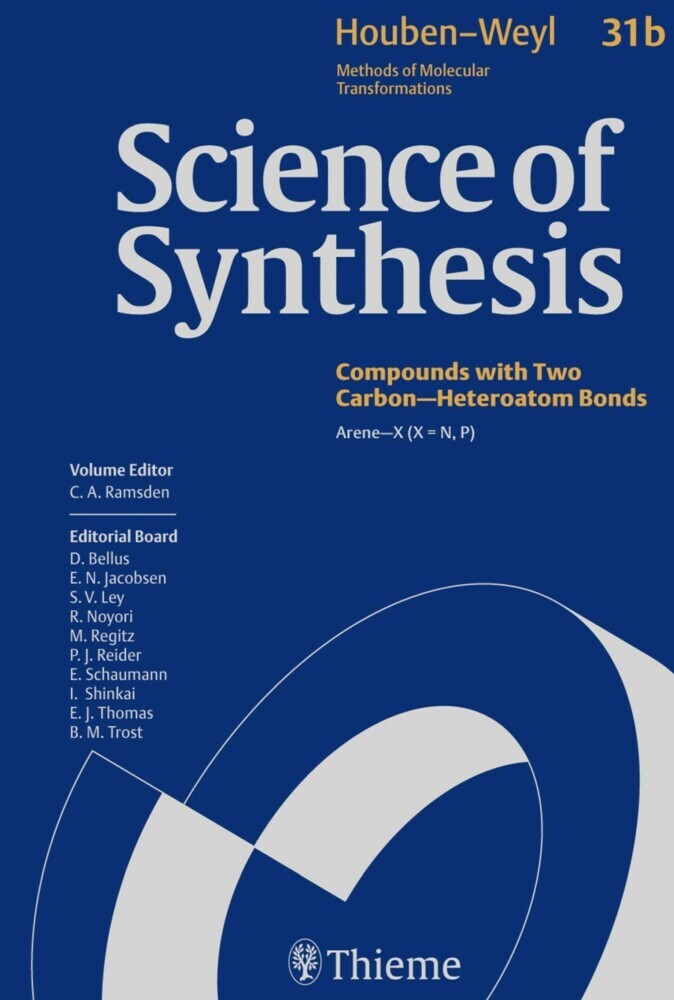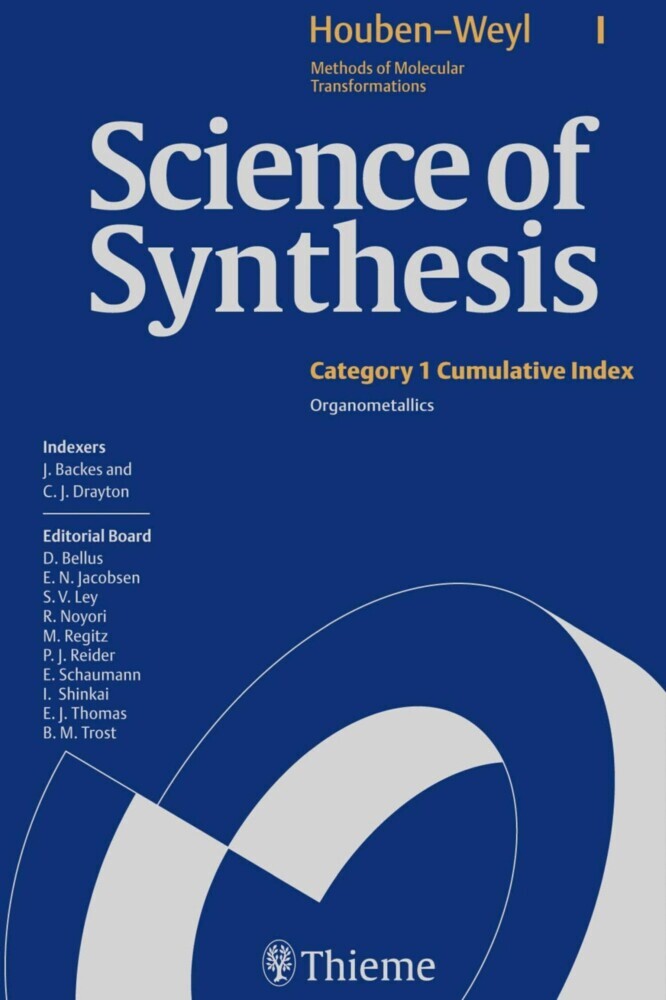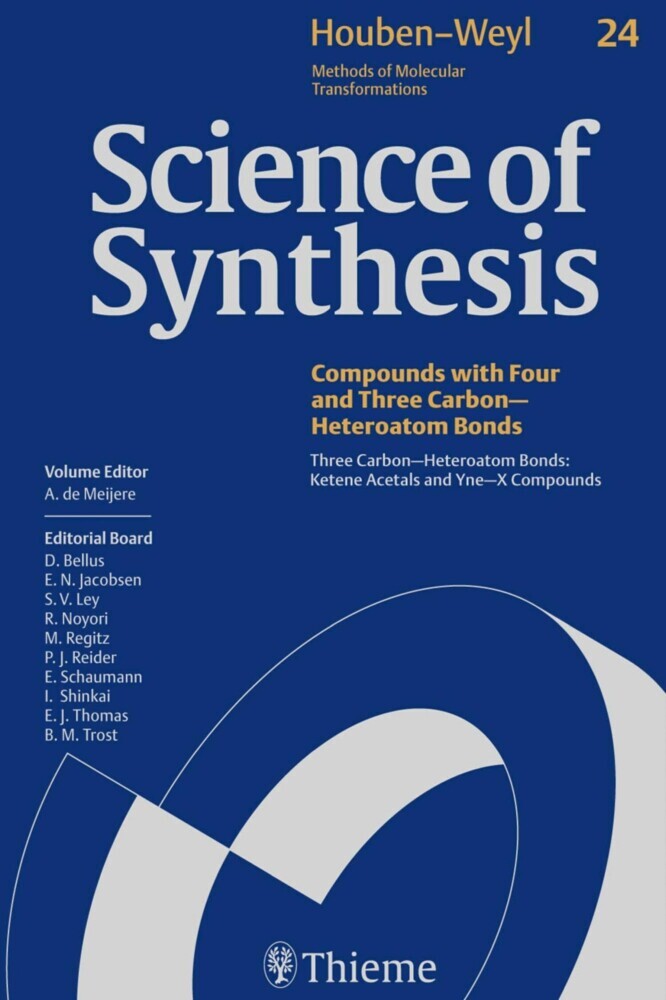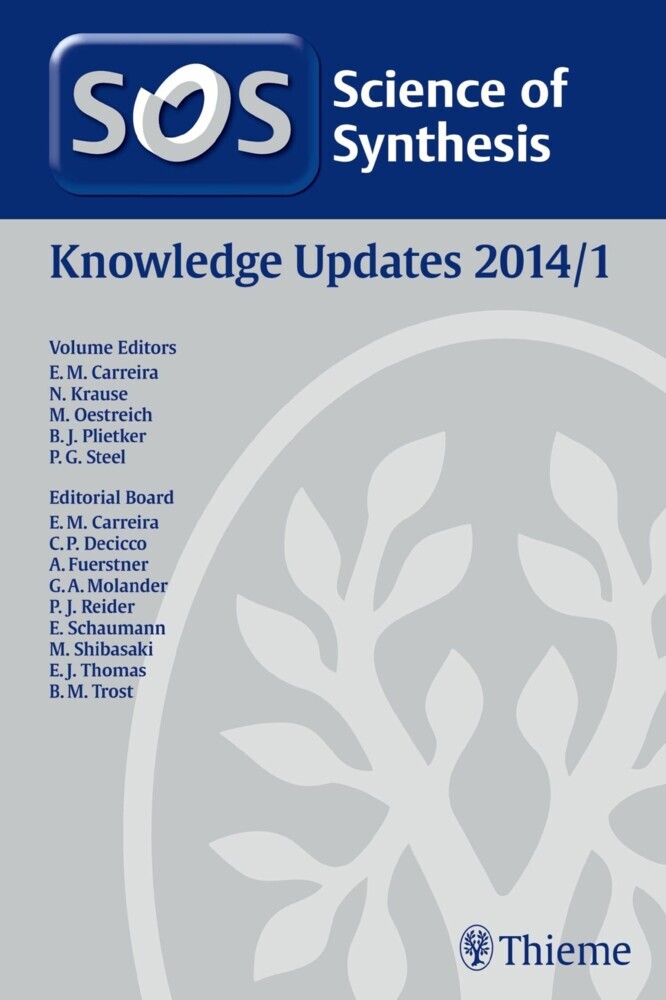Science of Synthesis: Houben-Weyl Methods of Molecular Transformations Vol. 2
Compounds of Groups 7-3 (Mn..., Cr..., V..., Ti..., Sc..., La..., Ac...)
Science of Synthesis: Houben-Weyl Methods of Molecular Transformations Vol. 2
Compounds of Groups 7-3 (Mn..., Cr..., V..., Ti..., Sc..., La..., Ac...)
Science of Synthesis: Houben-Weyl Methods of Molecular Transformations is the entirely new edition of the acclaimed reference series Houben-Weyl, the standard synthetic chemistry resource since 1909. This new edition is published in English and will comprise 48 volumes published between the years 2000 and 2008.
Science of Synthesis is a quality reference work developed by a highly esteemed editorial board to provide a comprehensive and critical selection of reliable organic and organometallic synthetic methods. This unique resource is designed to be the first point of reference when searching for a synthesis strategy.
- Contains the expertise of presently 400 leading chemists worldwide
- Critically evaluates the preparative applicability and significance of the synthetic methods
- Discusses relevant background information and provides detailed experimental procedures
For full information on the Science of Synthesis series, visit the Science of Synthesis Homepage.
1;Science of Synthesis - Volume 2: Compounds of Groups 7--3 (Mn..., Cr..., V..., Ti..., Sc..., La..., Ac...);1 1.1;Title page;3 1.2;Imprint;5 1.3;Preface;6 1.4;Volume Editor's Preface;8 1.5;Overview;10 1.6;Table of Contents;12 1.7;Introduction;52 1.8;2.1 Product Class 1: Organometallic Complexes of Manganese;64 1.8.1;2.1.1 Product Subclass 1: Manganese--Cyclopentadienyl Complexes;64 1.8.1.1;Synthesis of Product Subclass 1;64 1.8.1.1.1;2.1.1.1 Method 1: By Reaction between Cyclopentadienyl Anions and Manganese Halides;64 1.8.1.1.1.1;2.1.1.1.1 Variation 1: From Lithium Cyclopentadienide Salts and Manganese(II) Chloride;65 1.8.1.1.1.2;2.1.1.1.2 Variation 2: From Cyclopentadienyl Salts and Carbonyl(halo)manganese Complexes;66 1.8.1.1.2;2.1.1.2 Method 2: By Reaction between 5-Acetyl-1,2,3,4,5-pentamethylcyclopentadiene and Decacarbonyldimanganese(0);68 1.8.1.1.3;2.1.1.3 Method 3: By Substitution Reactions on the Manganese-Coordinated Cyclopentadienyl Ring;69 1.8.1.1.4;2.1.1.4 Method 4: By Insertion of 5-Diazocyclopenta-1,3-diene into a Manganese--Halogen Bond;69 1.8.2;2.1.2 Product Subclass 2: Manganese--Dienyl and --Diene Complexes;70 1.8.2.1;Synthesis of Product Subclass 2;70 1.8.2.1.1;2.1.2.1 Method 1: (.5-Pentadienyl)manganese Complexes from Pentadienyl Anions;70 1.8.2.1.1.1;2.1.2.1.1 Variation 1: A Tetrakis(pentadienyl)trimanganese Complex from Manganese(II) Chloride and 3-Methylpentadienyl Anion;72 1.8.2.1.2;2.1.2.2 Method 2: (.4-Butadiene)manganese Complexes from the Butadienemagnesium--Bis(tetrahydrofuran) Complex and Manganese(II) Chloride;73 1.8.2.1.3;2.1.2.3 Method 3: (.3-Pentadienyl)manganese Complexes from Potassium Pentadienide Salts;73 1.8.2.1.4;2.1.2.4 Method 4: (.5-Cyclohexadienyl)manganese Complexes by Reaction between Decacarbonyldimanganese(0) and Cyclohexa-1,3-dienes or by Reduction of Manganese--Arene Complexes;74 1.8.3;2.1.3 Product Subclass 3: Manganese--.3-Allyl Complexes;75 1.8.3.1;Synthesis of Product Subclass 3;75 1.8.3.1.1;2.1.3.1 Method 1: From Carbonyl(halo)manganese Complexes and Allyl Bromide;75 1.8.3.1.2;2.1.3.2 Method 2: From (.2-Alkene)- or (.2-1,3-Diene)manganese Complexes;75 1.8.3.1.3;2.1.3.3 Method 3: From (.1-Allyl)manganese Complexes by .1 to .3 Isomerization;76 1.8.3.2;Applications of Product Subclass 3 in Organic Synthesis;77 1.8.3.2.1;2.1.3.4 Method 4: Reaction of (.3-Allyl)manganese Complexes with Nucleophiles;77 1.8.4;2.1.4 Product Subclass 4: Manganese--Alkyne Complexes;78 1.8.4.1;Synthesis of Product Subclass 4;78 1.8.4.1.1;2.1.4.1 Method 1: By Ligand Substitution;78 1.8.5;2.1.5 Product Subclass 5: Manganese--Alkene Complexes;80 1.8.5.1;Synthesis of Product Subclass 5;80 1.8.5.1.1;2.1.5.1 Method 1: By Ligand Substitution;80 1.8.5.1.2;2.1.5.2 Method 2: By Ligand Transformation;81 1.8.6;2.1.6 Product Subclass 6: Manganese--Carbene Complexes;81 1.8.6.1;Synthesis of Product Subclass 6;81 1.8.6.1.1;2.1.6.1 Method 1: By Reaction between Alkylmetals and Carbonylmanganese Complexes;81 1.8.6.1.2;2.1.6.2 Method 2: Exocyclic Fischer Carbene Complexes by Reaction of Dibromoalkanes, Aziridines, or Oxiranes with Carbonylmanganese Complexes;84 1.8.6.1.3;2.1.6.3 Method 3: Manganese--Ethenylidene Complexes from Ethylidyne Complexes;85 1.8.6.1.4;2.1.6.4 Method 4: From Manganese--Acetylene Complexes;86 1.8.6.2;Applications of Product Subclass 6 in Organic Synthesis;87 1.8.6.2.1;2.1.6.5 Method 5: Reaction with Enynes, a,ß-Unsaturated Esters, or Alkynes;87 1.8.7;2.1.7 Product Subclass 7: Manganese--Carbyne Complexes;89 1.8.7.1;Synthesis of Product Subclass 7;89 1.8.7.1.1;2.1.7.1 Method 1: From Manganese--Carbene Complexes;89 1.8.8;2.1.8 Product Subclass 8: Manganese--s-Alkyl Complexes;90 1.8.8.1;Synthesis of Product Subclass 8;90 1.8.8.1.1;2.1.8.1 Method 1: From Alkyl Halides and Sodium Pentacarbonylmanganate( I);90 1.8.8.1.2;2.1.8.2 Method 2: From Alkylmetals and Manganese(II) Halides;91 1.8.8.1.2.1;2.1.8.2.1 Variation 1: Preparation of Tetraalkylmanganate(II);91 1.8.8
Barbier-Baudry, D.
Imamoto, Tsuneo
| ISBN | 9783131717214 |
|---|---|
| Artikelnummer | 9783131717214 |
| Medientyp | E-Book - PDF |
| Copyrightjahr | 2014 |
| Verlag | Georg Thieme Verlag KG |
| Umfang | 1070 Seiten |
| Sprache | Englisch |
| Kopierschutz | Digitales Wasserzeichen |

